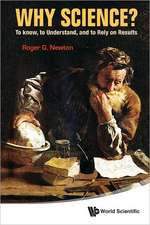Nobel Prizes and Life Sciences: Medical Applications of Accelerators
Autor Erling Norrbyen Limba Engleză Paperback – 31 aug 2010
This book discusses the most important prize in the world of science and gives unique historical insights into how the laureate selection process has developed to secure optimal choice.
No other book has been published which draws from previously classified archival materials to the extent that this book does. It indirectly deals with factors that foster scientific discoveries viz. the role of both individuals and institutions and thus provides invaluable insights for researchers, institutions and anyone interested in science.
| Toate formatele și edițiile | Preț | Express |
|---|---|---|
| Paperback (1) | 272.12 lei 3-5 săpt. | +36.13 lei 4-10 zile |
| World Scientific Publishing Company – 31 aug 2010 | 272.12 lei 3-5 săpt. | +36.13 lei 4-10 zile |
| Hardback (1) | 493.41 lei 6-8 săpt. | |
| WORLD SCIENTIFIC – 23 sep 2010 | 493.41 lei 6-8 săpt. |
Preț: 272.12 lei
Nou
Puncte Express: 408
Preț estimativ în valută:
52.07€ • 54.37$ • 42.100£
52.07€ • 54.37$ • 42.100£
Carte disponibilă
Livrare economică 25 martie-08 aprilie
Livrare express 08-14 martie pentru 46.12 lei
Preluare comenzi: 021 569.72.76
Specificații
ISBN-13: 9789814299374
ISBN-10: 9814299375
Pagini: 317
Dimensiuni: 163 x 244 x 23 mm
Greutate: 0.7 kg
Editura: World Scientific Publishing Company
ISBN-10: 9814299375
Pagini: 317
Dimensiuni: 163 x 244 x 23 mm
Greutate: 0.7 kg
Editura: World Scientific Publishing Company
Recenzii
Who but a scientist of the caliber of Norrby, closely connected with the Royal Swedish Academy and intimately associated with the process of selection of Nobel Prizes for several years can provide a better account of the intricacies of this process. -- Current Science "Current Science"



















